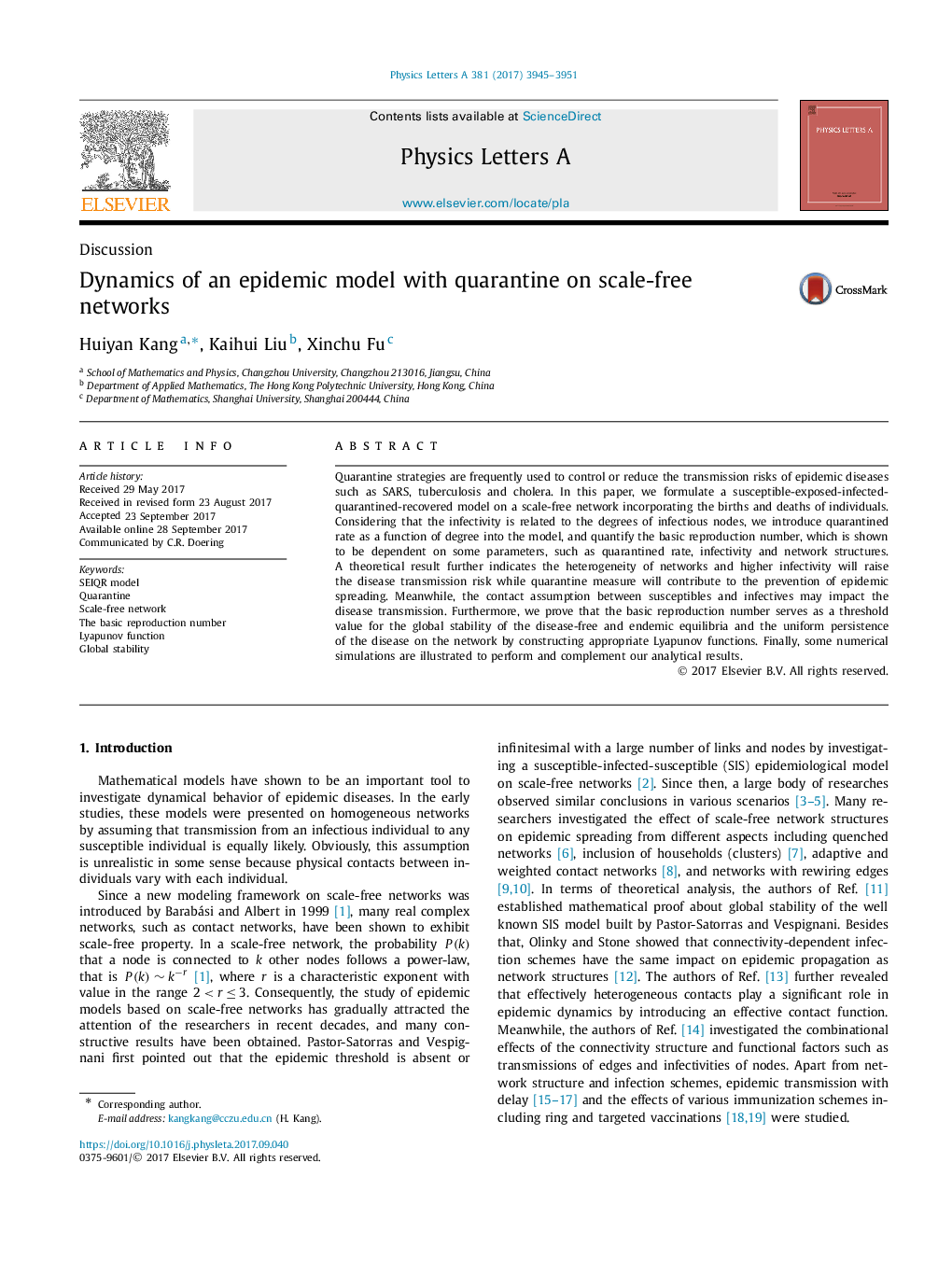| Article ID | Journal | Published Year | Pages | File Type |
|---|---|---|---|---|
| 8204396 | Physics Letters A | 2017 | 7 Pages |
Abstract
Quarantine strategies are frequently used to control or reduce the transmission risks of epidemic diseases such as SARS, tuberculosis and cholera. In this paper, we formulate a susceptible-exposed-infected-quarantined-recovered model on a scale-free network incorporating the births and deaths of individuals. Considering that the infectivity is related to the degrees of infectious nodes, we introduce quarantined rate as a function of degree into the model, and quantify the basic reproduction number, which is shown to be dependent on some parameters, such as quarantined rate, infectivity and network structures. A theoretical result further indicates the heterogeneity of networks and higher infectivity will raise the disease transmission risk while quarantine measure will contribute to the prevention of epidemic spreading. Meanwhile, the contact assumption between susceptibles and infectives may impact the disease transmission. Furthermore, we prove that the basic reproduction number serves as a threshold value for the global stability of the disease-free and endemic equilibria and the uniform persistence of the disease on the network by constructing appropriate Lyapunov functions. Finally, some numerical simulations are illustrated to perform and complement our analytical results.
Related Topics
Physical Sciences and Engineering
Physics and Astronomy
Physics and Astronomy (General)
Authors
Huiyan Kang, Kaihui Liu, Xinchu Fu,
